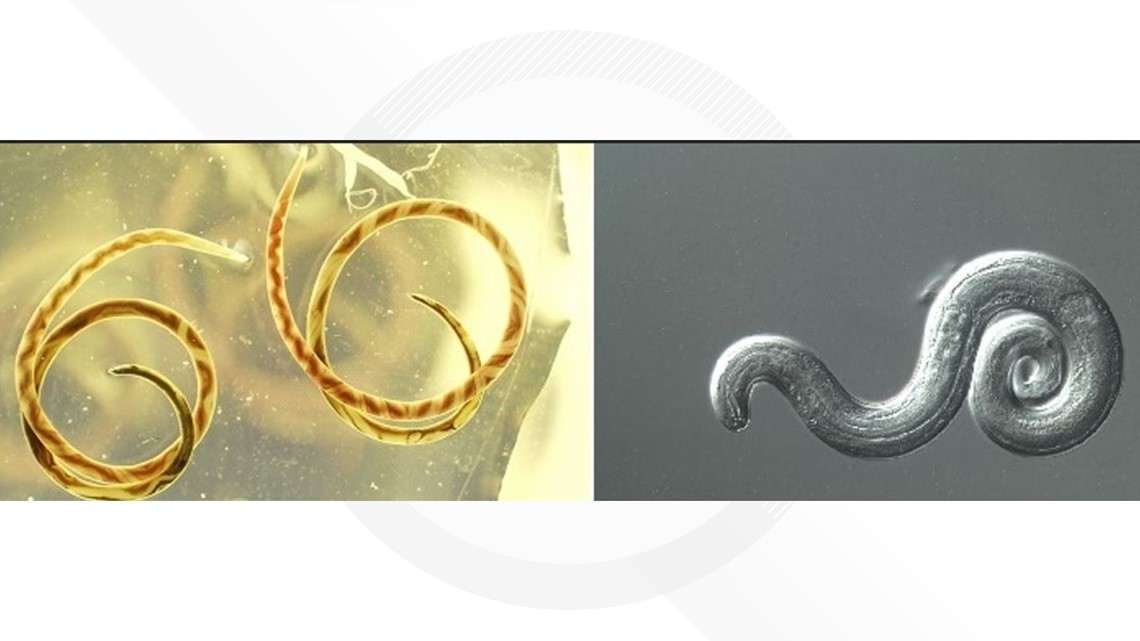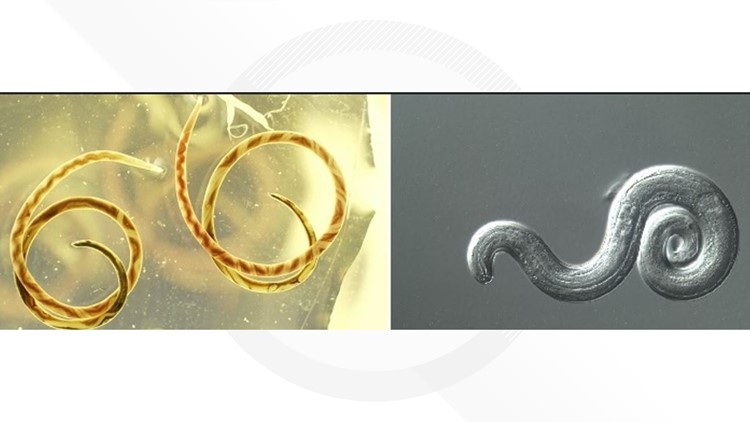ATLANTA — A parasitic worm spread by contaminated rats and worms has been found in Atlanta, according to new research published in a Centers for Disease Control and Prevention journal.
The parasitic worm of rats is known as Angiostrongylus cantonensis or rat lungworm. When ingested by humans, it can cause a rare type of viral infection known as eosinophilic meningitis.
A study on the parasitic worm was published in the October edition of the CDC journal "Emerging Infectious Diseases" and observed its presence in Atlanta from 2019-2022.
Commonly found in Southeast Asia and tropical Pacific islands, the parasitic worm is being discovered in different parts of the world, the study reports. In the U.S., it's been reported in Hawaii and later in Texas, Louisiana, Alabama, and Florida.
Researchers collected tissue samples from 33 dead wild brown rats during 2019–2022 in Atlanta to confirm the parasitic worm's prevalence in the state. Of the animals evaluated, 21.2% had nematodes in the heart, pulmonary artery, and brain tissues.
According to the study, discovering the parasitic worm in Atlanta suggests it has become established in a new area of the U.S.
The adult form of the parasite can only be found in rodents, such as rats. The cycle of transmission begins when a rodent becomes infected, ingesting infected land snails and slugs. Once the rodent becomes the host, the parasite moves through their body and into their feces as larvae.
Snails and slugs then get infected by ingesting the larvae. Other animals, such as fish, frogs, and crustaceans, can also harbor the worm.


How can people get infected?
People can get infected by eating raw or undercooked snails or slugs infected with this parasite.
In the past, children have gotten infected by swallowing snails/slugs "on a dare." People also can get infected by accident by eating raw produce (such as lettuce) that contains a small snail or slug or part of one.
It is also possible for people to become infected by eating undercooked or raw animals that are infected, although evidence for this is not as clear, the study said.
Animals like fish do not spread the parasite.
What are the signs and symptoms of infection with this parasite?
Symptoms of the parasitic worm depend on the person, the CDC lists online.
Some infected people might not have symptoms or mild ones that don't last long.
In rare instances, people can develop eosinophilic meningitis. Research shows there have been 2,827 cases worldwide since 1945 of the rare form of meningitis.
Symptoms of eosinophilic meningitis include headache, stiff neck, tingling or painful feelings in the skin, low-grade fever, nausea, and vomiting.
What should I do if I think I might be infected with this parasite?
The CDC recommends that you see your healthcare provider if you think you've been infected.
Does infection with this parasite need to be treated?
The parasite dies over time and usually does not require treatment, even for people who develop eosinophilic meningitis. Symptoms of the infection can last for several weeks or months, depending on the body's immune system.
The most common types of treatments for the infection include pain medication for headaches or medications to reduce the body's reaction to the parasite.
Although researchers confirmed the parasite in rats, they believe the worm was likely in Georgia much earlier than in 2019.


